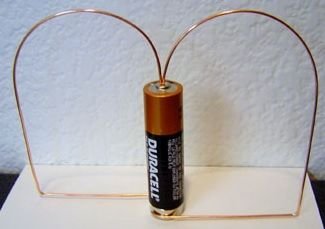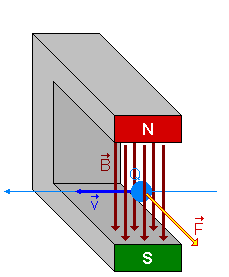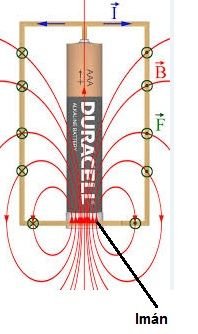
Source
The Lorentz force is the force that a charge experiences as it passes through an electromagnetic field.

Source
As you see in the figure, Q would be the charge (electron in motion) and when crossed by a magnetic field, that of the magnet, it will experience a force perpendicular to the field (F = force perpendicular to the field).
In the homopolar motor, the magnet produces a magnetic field perpendicular to the table. The current circulates radially from the center of the magnet to the cylindrical surface of the battery (the contacts of the cable). The force produced on the current (load) that circulates through the cable will be perpendicular to the cable, which causes the moving part of the motor to move by turning the conductor turn. The Force will have direction away from the page.

Source
The homopolar motor is characterized because the magnetic field of the magnet always maintains the same polarity (hence its name, from the Greek homos, equal). It is one of the many magnetic motors, the simplest of all.
If we cut one of the branches of the cable, it will not flow current, but the other, so that we will continue to turn the cable with respect to the magnet and our engine will also work.
Changing the battery or the magnet, or changing the characteristics of the copper cable, for example, the thickness, we can modify the speed of rotation.
The practical applications of our engine are limited by the power that can supply the battery but, in addition to the obvious didactic utility, you could think of using it, for example, as a device to move a rotating display where there is no possibility of plugging a conventional motor and we do not have solar cells.